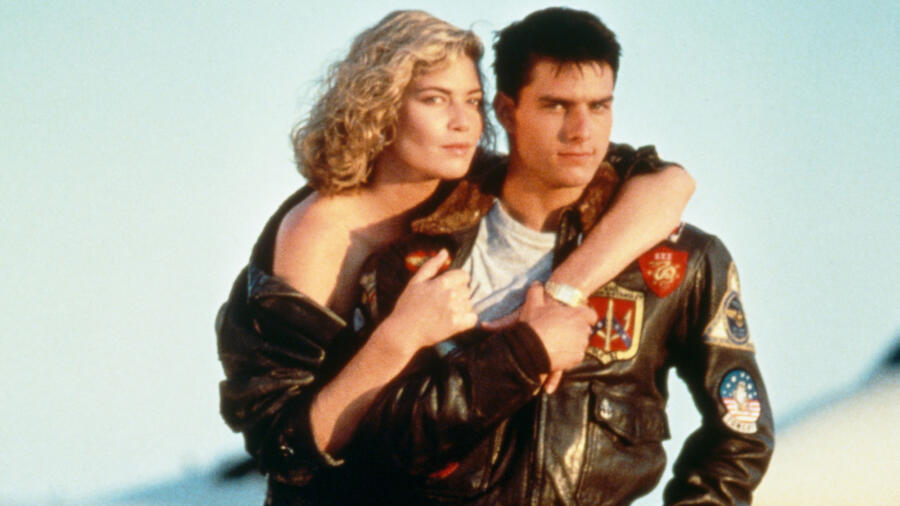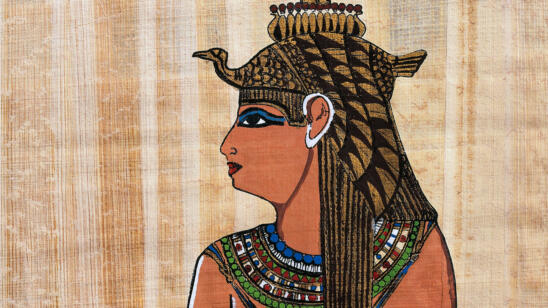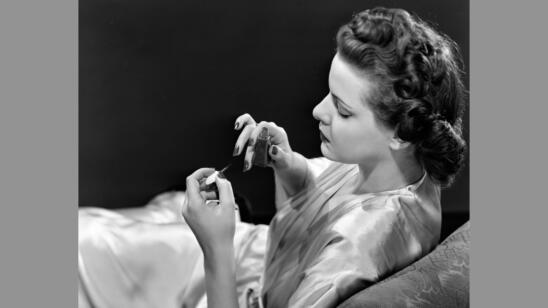Back in the days of the earliest airplanes, cockpits were unheated and open, leaving pilots exposed to the elements. In 1917, the U.S. Aviation Clothing Board developed the original flight jacket, known as the A-1. Made of leather or shearling, it kept pilots warm and protected, while the short length, loose sleeves and unstructured shoulders didn’t restrict their movements. The A-1’s immediate successor, the A-2 (shocker!) became standard issue for the U.S. Army Air Corps through the early ‘40s, while Navy pilots sported the G-1, which featured a fur-lined collar. The leather flight jacket is still a popular style today, thanks in part to starring roles in such classic ‘80s movies as “Top Gun” and “Raiders of the Lost Ark.”
As airplane technology advanced, so did the flight jacket. By World War II, cockpits were enclosed, but there was even less space inside to move around, and more and more instruments to manage. Pilots’ outerwear needed to be lighter and less bulky, but still protective. The B-15 jacket, introduced in 1944, was made of water-repellent nylon, with a wool-knit waistband and cuffs and a fur collar for extra warmth.
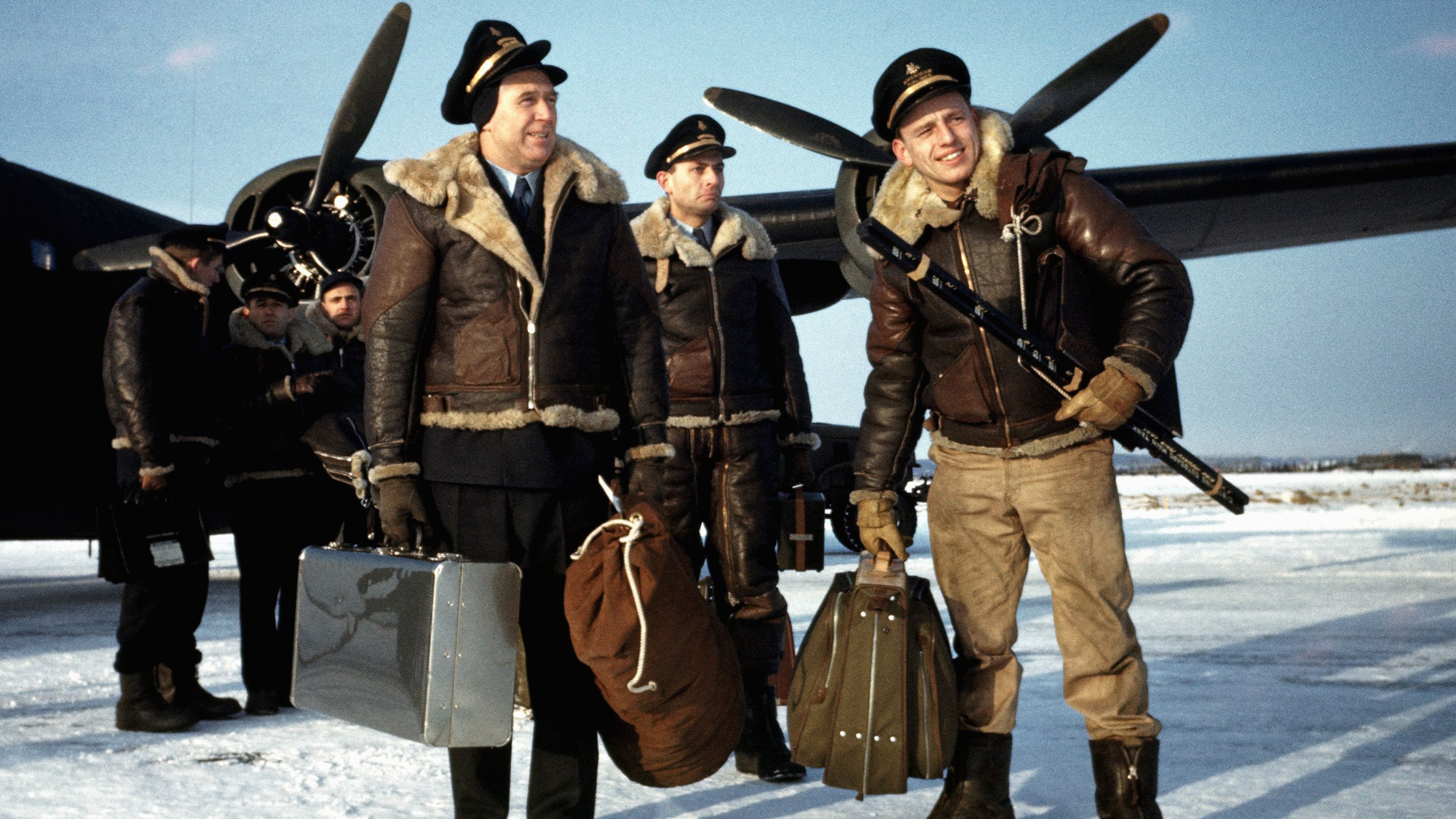
A US Air Force flight crew arrives at their Goose Bay, Labrador base in December 1942. (Photo by Ivan Dmitri/Michael Ochs Archives/Getty Images)
The modern bomber jacket, formally known as the MA-1, made its entrance around 1950. It nixed the fur collar–which ran the risk of getting caught in a parachute harness–and added a bright red-orange liner that could be turned inside out in case a pilot was stranded and needed to attract rescuers’ attention, and a pocket and pen slot on the arm. Originally issued in a midnight blue color, the MA-1 soon shifted to the more commonly known sage green, which provided better camouflage for soldiers fighting in Korea and Vietnam.
By the mid-‘50s, bombers weren’t just for the military anymore. Marlon Brando, James Dean and Steve McQueen all wore them memorably in movies, turning the bomber into a symbol of rebellious cool. They weren’t just for men, either: As early as 1954, no less a style icon than Marilyn Monroe modeled a B-15 fur-collared bomber during a visit to U.S. troops in Korea. The original British skinheads–at that time known more for their mod style than their extreme politics–made the MA-1 their own in the early ‘60s, pairing it with skinny jeans and combat-like boots. And as if it needed even more exposure, the ‘80s would see the bomber jacket go high fashion for the first time–but certainly not the last–courtesy of bad-boy designer Jean-Paul Gaultier.
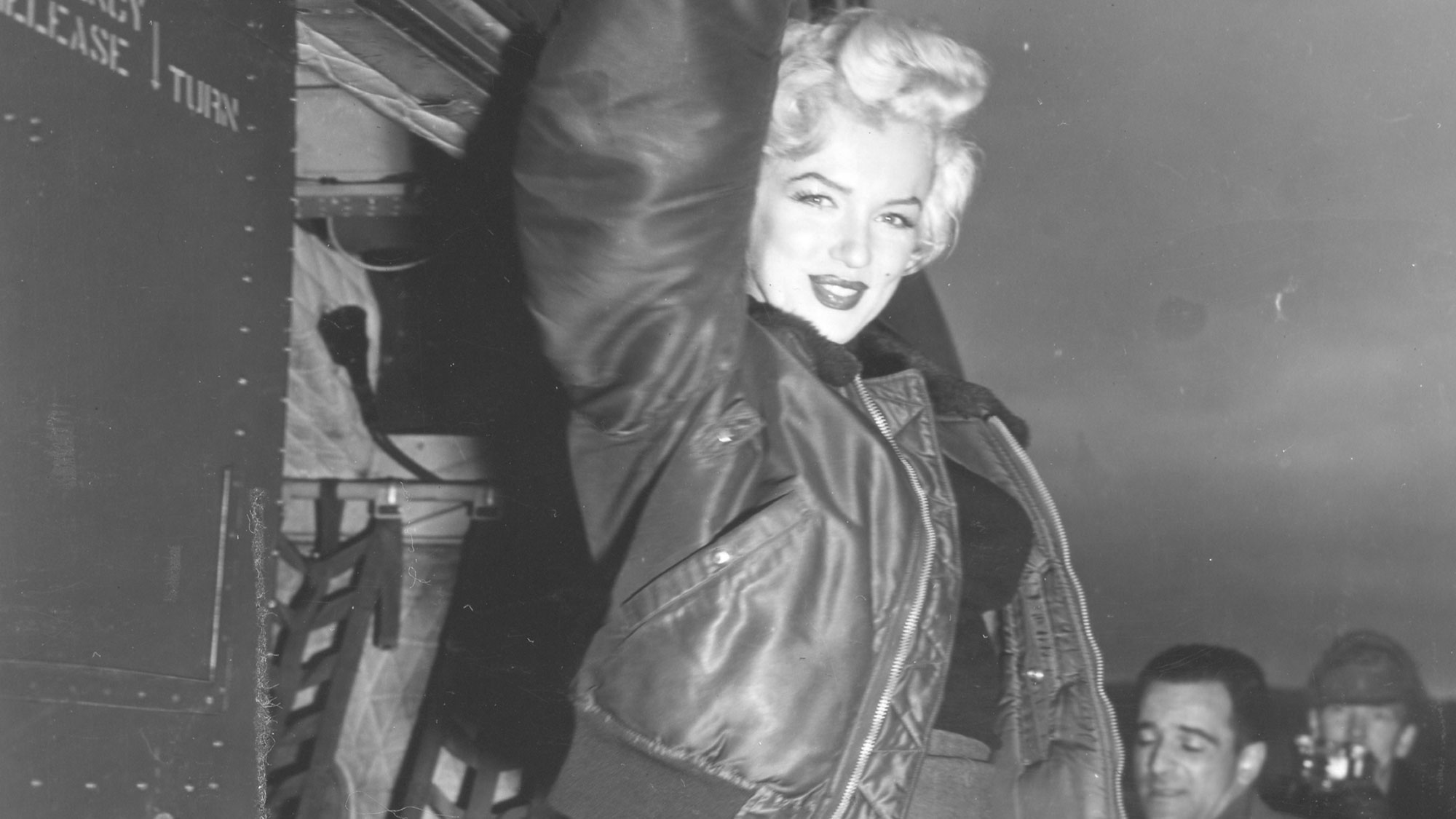
Marilyn Monroe poses for photographers as she arrives in Korea to perform the USO Campshow ‘Anything Goes,’ in February 1954. (Photo by PhotoQuest/Getty Images)
The MA-1 last saw active military service in the Gulf War of the early ‘90s, after which the military officially phased it out. But in civilian life, it’s a different story. The bomber jacket–the style of choice for everyone from athletes to hip-hop stars to U.S. presidents visiting troops in the Middle East–is here to stay.
